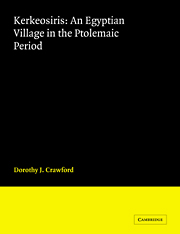The Journal of Juristic Papyrology 36 (2006)
vol. 36 (2006)
Table of Contents
here as a pdf file
“From the Editors” p. 7
Tomasz Derda
“Waterway Fayum – Alexandria. A Note on P. Lille i 1 (P. Zen. Pest., Appendix A)” p. 9
Tomasz Derda & Jacques van der Vliet
“Four Christian Funerary Inscriptions from the Fayum (I. Deir el-CAzab 1–4)” p. 21
Dorota Dzierzbicka & Adam Łajtar
„P. Vrat. inv. 2: a List of Contributions in Money“ p. 35
Włodzimierz Godlewski & Adam Łajtar
„Grave Stelae from Deir el-Naqlun“ p. 43
Nikolaos Gonis
„Oxyrynchite Villages, Men and Money“ p. 63
Piotr Hoffman & Bartek Klin
„Careful with That Computer: on Creating Maps by Multidimensional Scaling of Papyri in Katja Mueller’s Recent Studies on the Topography of the Fayum“ p. 67
Adam Łajtar
„Christian Saï in Written Records (Inscriptions and Manuscripts)“ p. 91
Adam Łajtar
„Varia Nubica x-xi“ p. 105
Tomasz Markiewicz
„Heqanakhte and the Origins of Hemiolion“ p. 125
Jacques van der Vliet
„Judas and the Stars: Philological Notes on the Newly Published Gospel of Judas (GosJud, Codex Gnosticus Maghâgha 3)“
p. 137
Uri Yiftach Firanko
„Spouses in Wills: a Diachronic Survey (III B.C.–IV A.D.)“ p. 153
Dwight W. Young
„An Edition of Two Folios from a Shenoutean Discourse against the Devil“ p. 167
Joachim Hengstl
„Juristische Literaturübersicht 1999–2001“ (Teil III) p. 189
Announcement „The Journal of Juristic Papyrology and Its Supplements“
Index of the Contents of JJP 1-31
Source: Tomasz Markiewicz, ed. (thanks)
Labels: JJP







